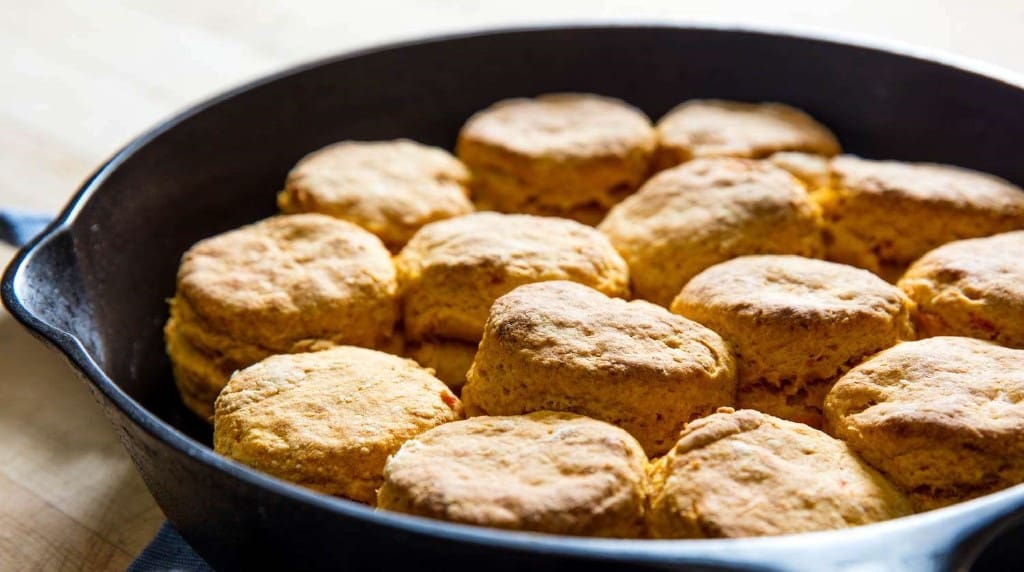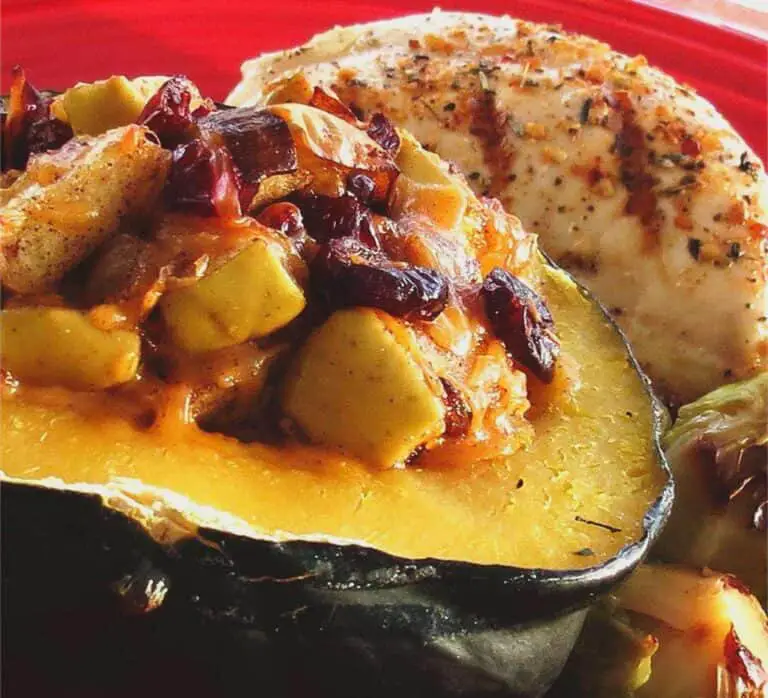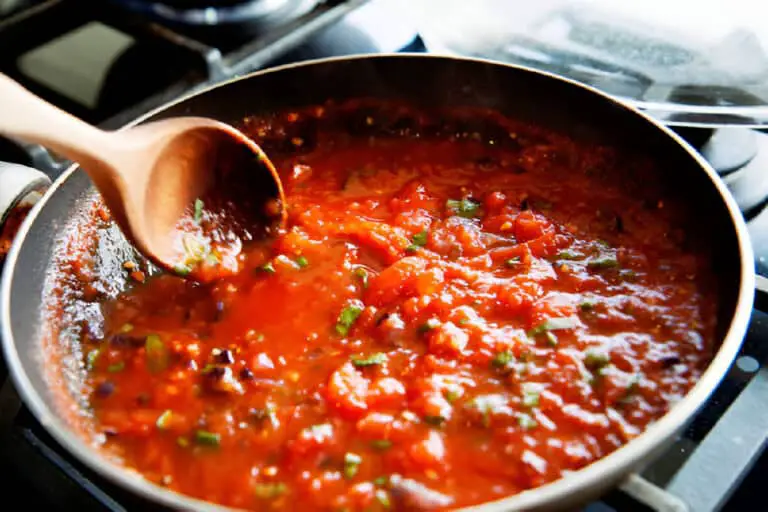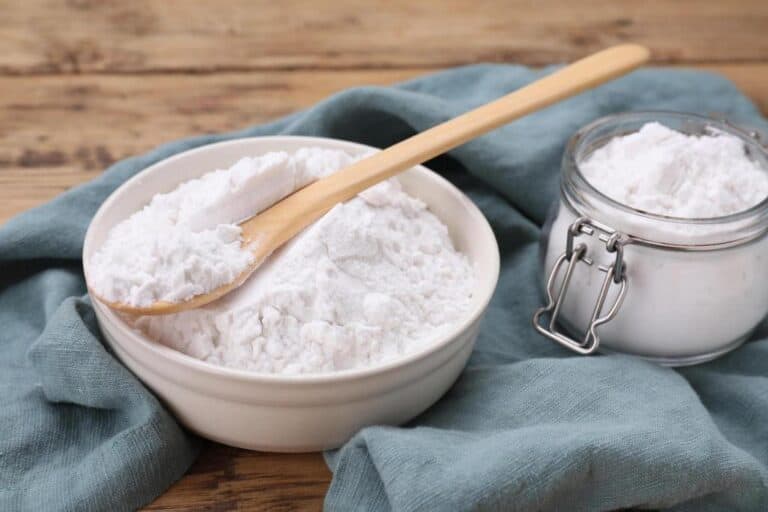Can You Use All-Purpose Flour for Biscuits? Here’s the Surprising Answer!

When it comes to baking, I’m all about finding the right balance between convenience and deliciousness. And one question that often pops up in my mind is: Can you use all-purpose flour for biscuits?
I’ve had my fair share of flaky biscuits and dense disappointments, so I decided to dig into this question and share what I found. Spoiler alert: All-purpose flour can definitely rise to the occasion!
Understanding the Flour Types

Before diving into the biscuit-making process, let’s break down the flour types. You’ll find various flours on the grocery store shelves, but the two main contenders for biscuits are all-purpose flour and self-rising flour.
What’s the Difference?
| Flour Type | Protein Content | Best For |
| All-Purpose Flour | 10-12% | Versatile baking (cookies, muffins) |
| Self-Rising Flour | 8-10% | Biscuits, pancakes (with baking powder) |
All-Purpose Flour: As the name suggests, this flour does it all. It’s versatile and can handle most baking needs, but all-purpose fluor doesn’t have any leavening agents mixed in.
Self-Rising Flour: This is all-purpose flour with baking powder and salt added. It’s perfect for biscuits because it gives them that lovely rise, making them fluffy and tender.
So, can all-purpose flour work for biscuits? Yes, indeed! It might take a little tweaking, but it can still yield tasty results.
The Science Behind Biscuit Making
Baking biscuits is like conducting a symphony. Each ingredient plays a vital role in achieving that perfect harmony of flavor and texture. The flour provides structure, while the fat adds tenderness.
Key Ingredients for Perfect Biscuits
- All-Purpose Flour: The backbone of the recipe.
- Fat: Usually butter or shortening, which creates flakiness.
- Liquid: Milk or buttermilk keeps the dough moist.
- Leavening Agents: Baking powder helps the biscuits rise.
Making the Magic Happen
Here’s where it gets interesting. The process of making biscuits involves mixing the flour and fat until it resembles coarse crumbs, then adding in the liquid. The way you handle the dough impacts the final product. Overworking it can lead to tough biscuits, while gentle kneading keeps them light.
Recipe: Fluffy All-Purpose Flour Biscuits
I experimented with a recipe using all-purpose flour, and I can confidently say it turned out delightful. Here’s my take on it:
Ingredients
- 2 cups all-purpose flour
- 1 tablespoon baking powder
- 1/2 teaspoon salt
- 1/4 cup cold butter (cut into small pieces)
- 3/4 cup milk (or buttermilk for extra flavor)
Directions
- Preheat your oven to 425°F (220°C): Get that heat cranking before you start mixing.
- Mix Dry Ingredients: In a large bowl, combine the flour, baking powder, and salt.
- Cut in the Butter: Using a pastry cutter or your fingers, mix the cold butter into the flour until the mixture looks like coarse crumbs. This step is crucial for flakiness!
- Add Milk: Pour in the milk and stir until just combined. Remember, don’t overmix!
- Knead Lightly: Turn the dough onto a floured surface and gently knead it a couple of times until it holds together.
- Roll and Cut: Roll the dough to about 1-inch thick and use a biscuit cutter to cut out the biscuits. Place them on a baking sheet lined with parchment paper.
- Bake: Pop them in the oven for about 12-15 minutes or until golden brown.
Tips for Success
- Use Cold Ingredients: Keeping the butter and milk cold helps create that flaky texture.
- Don’t Overwork the Dough: Remember, gentle hands make tender biscuits!
- Experiment with Add-ins: Feel free to toss in some shredded cheese, herbs, or even bacon bits for an extra kick.
| Also read: Are All-Purpose Flour and Maida Interchangeable? |
The Verdict: All-Purpose Flour in Action
After making these biscuits, I can confirm that all-purpose flour works beautifully! They rose well, had a lovely crumb, and didn’t turn into hockey pucks. The texture was just right—light, fluffy, and oh-so-satisfying.
Biscuits for Every Occasion
Now that I’ve mastered using all-purpose flour, I find myself whipping up biscuits for all sorts of occasions. Here are a few ways I like to enjoy them:
- Breakfast: Slathered in butter and homemade jam.
- Lunch: Paired with soup for a cozy meal.
- Dinner: As a side to fried chicken or roasted veggies.
- Snacks: Perfect for dipping in gravy or a hearty stew.
Troubleshooting Common Issues
Even with all-purpose flour, you might run into some hiccups. Here are a few common problems and how to solve them:
| Issue | Possible Cause | Solution |
| Biscuits are too dense | Overmixing the dough | Mix gently and don’t knead too much. |
| Biscuits didn’t rise enough | Old baking powder or too little | Check the expiration date and measure accurately. |
| Biscuit bottoms burn | Oven temperature too high | Lower the temperature and bake longer. |
| Biscuits taste bland | Not enough salt or flavor | Add seasoning or try using buttermilk. |
Conclusion: Flour Power!
So, can you use all-purpose flour for biscuits? Absolutely! With a few adjustments and a sprinkle of care, you can create delicious, flaky biscuits that will impress anyone at your table.
The beauty of cooking lies in experimentation, and using all-purpose flour opens the door to a world of possibilities. Next time you find yourself craving a biscuit, remember that you can reach for that bag of all-purpose flour and whip up something fantastic.
Happy baking, and may your biscuits always rise to the occasion!






